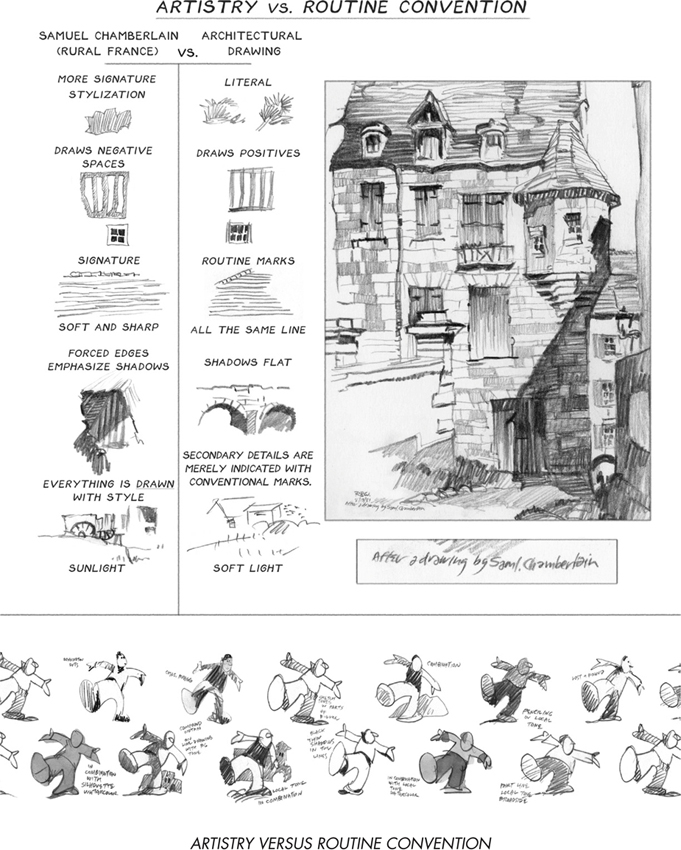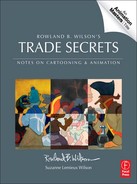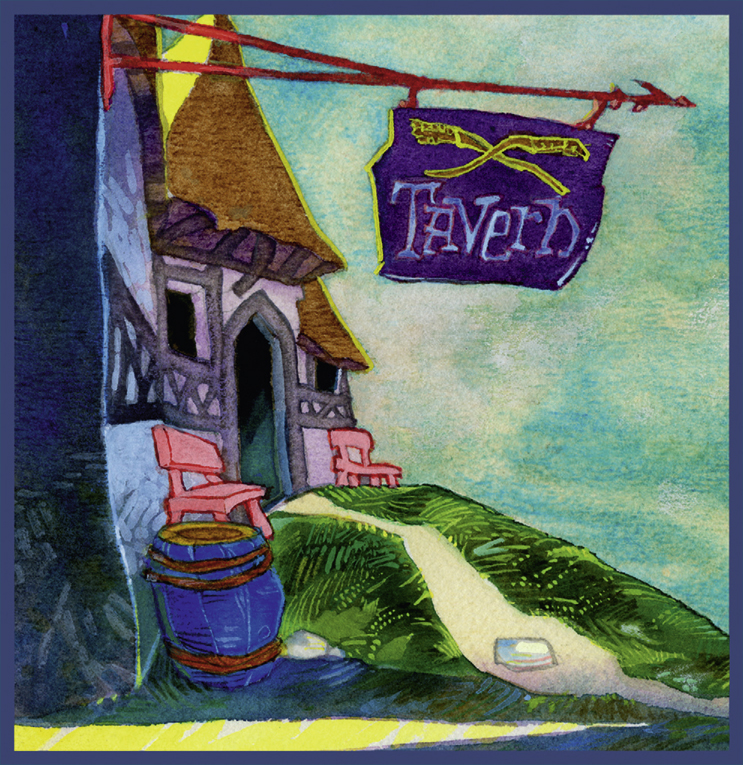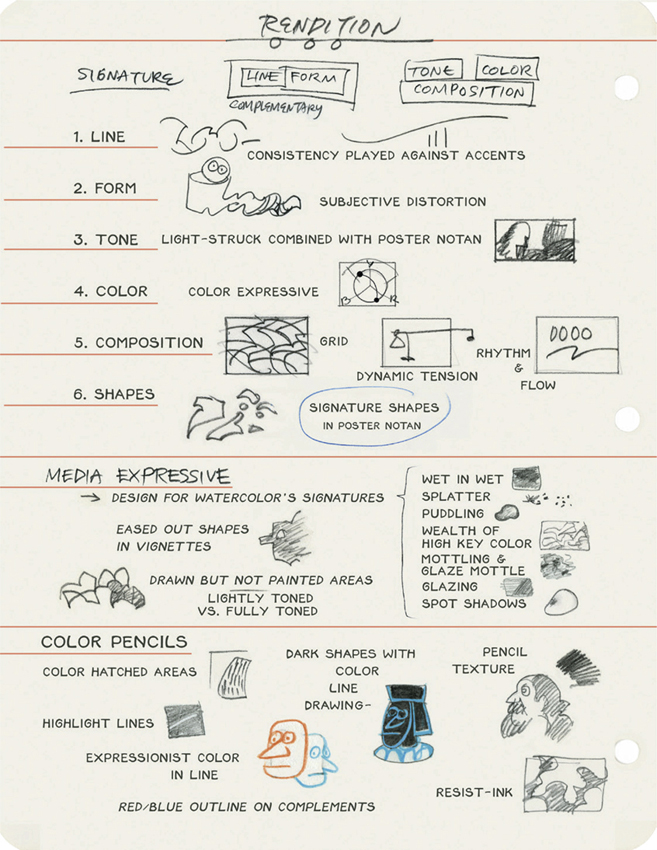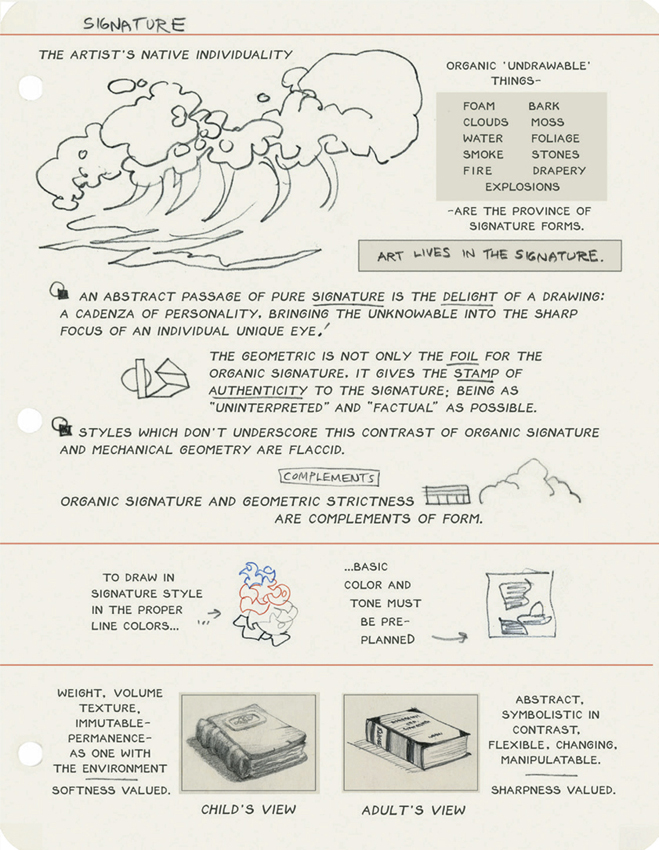FORM RENDITION

INSPIRATION FROM OTHER ARTISTS
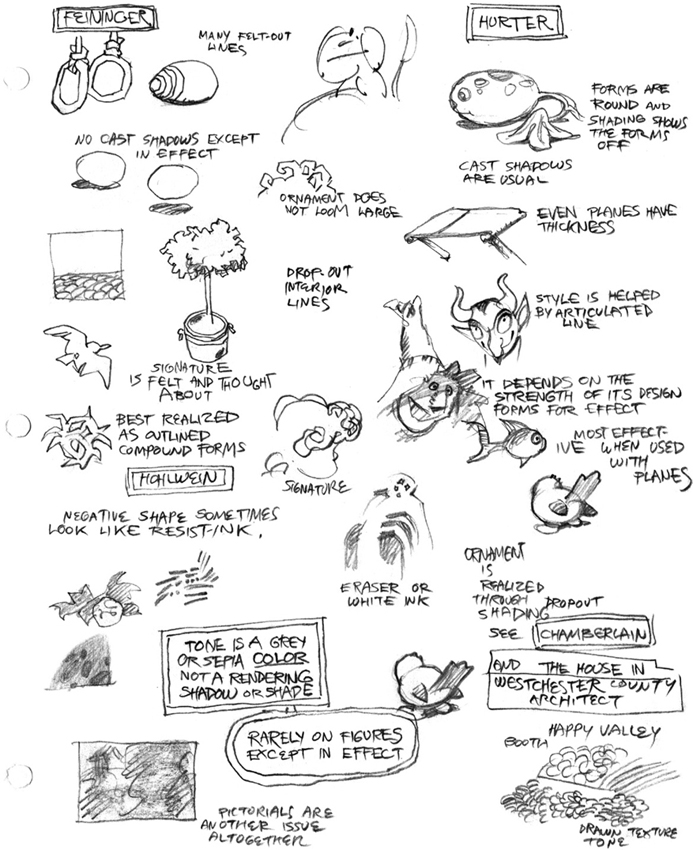
VARIOUS METHODS OF HANDLING EDGES

EXAMPLES OF EDGE STYLES
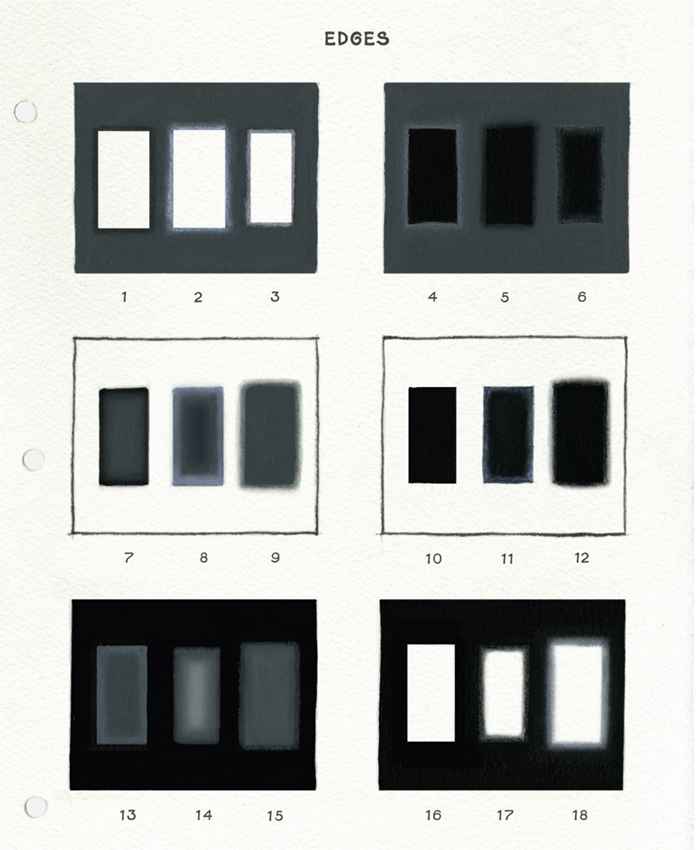
EXAMPLES OF EDGE TREATMENT 1

EDGE TREATMENT WITH COLOR
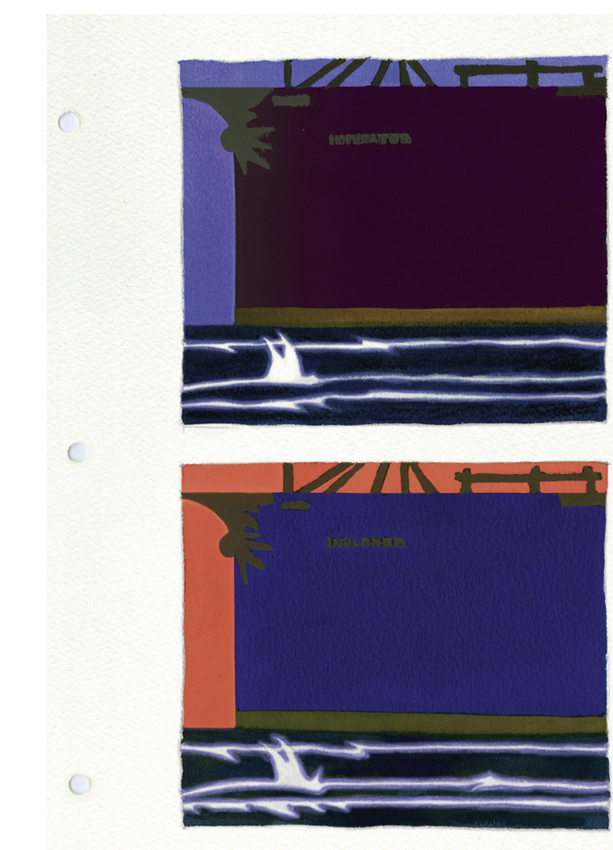
RENDITION NOTES

TRANSPARENT AND OPAQUE WATERCOLOR TECHNIQUES
1. XEROX ON TONED PAPER—Work out notan on a toned paper. Xerox your pencil drawing onto a gray charcoal paper and then paint over it.
2. TONED PAPER—Work out color notan on a color toned paper. Either drop in an ink wash on white or use a colored charcoal paper and use it as a support for your painting.
3. LIFTED OUT (Washing down)—After laying in a strong wash scrub it out with a stiff brush—for maximum grain. This can be done over a completed painting. Aquapasto can be added. (Example: cartoon showing procession of Pilgrims in the snow encountering a New Year’s Eve partyer in stocks exclaiming “Hap—py New Year!” printed in Playboy magazine.)
4. “TINT YOUR OWN”—Lay down a tint over the whole picture before starting. Vignette area can be left out to allow for luminosity of white paper in focal area.
5. TWO COLORS OF INK—Brushed on: black and brown, blue and brown or other combination.
Could be used with opaque wash to “vague” out the detail in the darkest parts.
6. SAME-COLOR LINE AND TONE—Brushed on ink where line becomes tone and tone becomes line. Effective when colors are used. Line is done first then tones are filled in with same color.
7. GRADED SHADOWS—“Puddle” on a light gray tone using a lot of water. Create variations of color and value by mingling in darker tones of green and brown.
8. MULTICOLOR LIFT OUT—Patchwork shadow patterns are painted in strongly. Then highlights are scrubbed out with bristle brush. Use various colors.
9. UNIFYING WASH—Full detail is painted over the whole picture. Then a cool gray is set over the middle ground to unify it.
10. SCRATCH OUT—This works best in conjunction with “rough-edged” washes. A sharp instrument such as stick, razor, or Exacto knife can be used to scrape out areas.
11. AQUAPASTO—Aquapasto is a thickening gel that adds body to the paint, allowing for opaque-over-transparent effects. It can be used to simulate the look of resist-ink or woodblock prints. It is similar to methods used in “The Trans-Siberian Express” animated commercial for Count Pushkin Vodka. This is a good technique for background images such as trees, cottages, rivers and mountains.
12. SCRAPING THE PAPER—When this is done before painting it takes wash differently. Can be interesting with plate watercolor paper.
13. GRANULAR WASH—Using one color at a time with a lot of water. Shift paper to make wash run up and down. This works with pigments that deposit a random amount of sediment such as Ultramarine Blue, Manganese Blue, Cobalt Blue, Cobalt Violet, Rose Madder, Burnt Umber, Raw Umber and Cobalt Green. It can also be done with gouache.
14. GRANULATED OVERPAINTING—To add an interesting and unifying texture wash granulated gray over an area or whole picture. Underpainting will be more fixed after two or three days.
15. WIPING OUT—Adding glycerin keeps surface wet longer. It also aids wiping out when dry. Used as an underpainting it keeps the surface damp. It can be put over ink tints.
16. COLORED PAPER WITH GOUACHE WASH—This combination provides a great range from opaque on down to tint. Thin gouache can be used like transparent watercolor. Light can be painted on dark.
17. MONOCHROMATIC—Simple monochromatic work reproduces with great strength. The printing process and juxtaposition of colors creates optical variations.
18. PROCEDURE—Notan established on tone paper by:
A. Dropping in the second lightest value (light sky).
B. Dropping in darkest tones such as dark trees.
C. Adding accents of color light plus body tone (opaque watercolor) in a complement popped in.
19. VERY SOFT EDGES—Create this effect by wiping out wet opaque areas.
20. FINAL TONE—Add an overall coat of thin gouache over painting. It doesn’t necessarily have to be white; a light gray or warm color gives a nice effect. It softens the existing drawing.
21. SOAKED PAPER—Apply a coat of gouache over soaked paper, then wipe out the effects. Try both wet and dry blotters. It is “drawing in washable wash.” A tone over it may or may not obscure it according to taste.

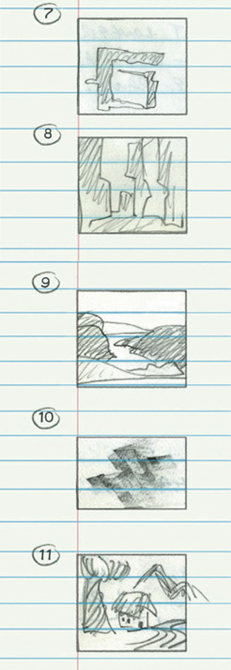


EXAMPLES OF WATERCOLOR TECHNIQUES
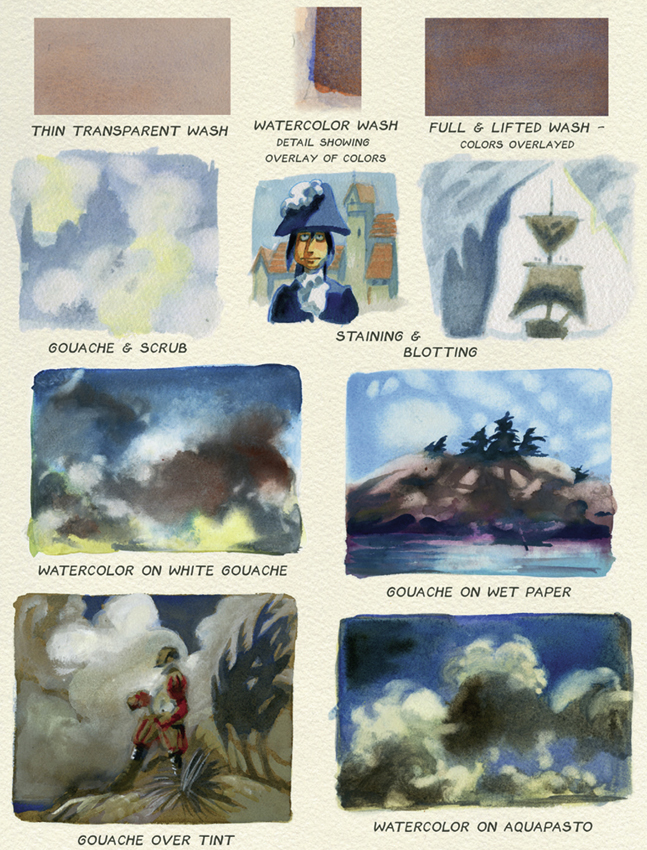
INK, MASKOID, WATERCOLOR AND GOUACHE TECHNIQUES

PAINT HANDLING—BRUSH STROKES AND LINES

TRANSPARENT AND OPAQUE PAINT HANDLING ON TONED PAPER
This method demonstrates the range of paint application. Thin transparent washes allow the background color to show through. Thick application obscures it and is useful for highlights.
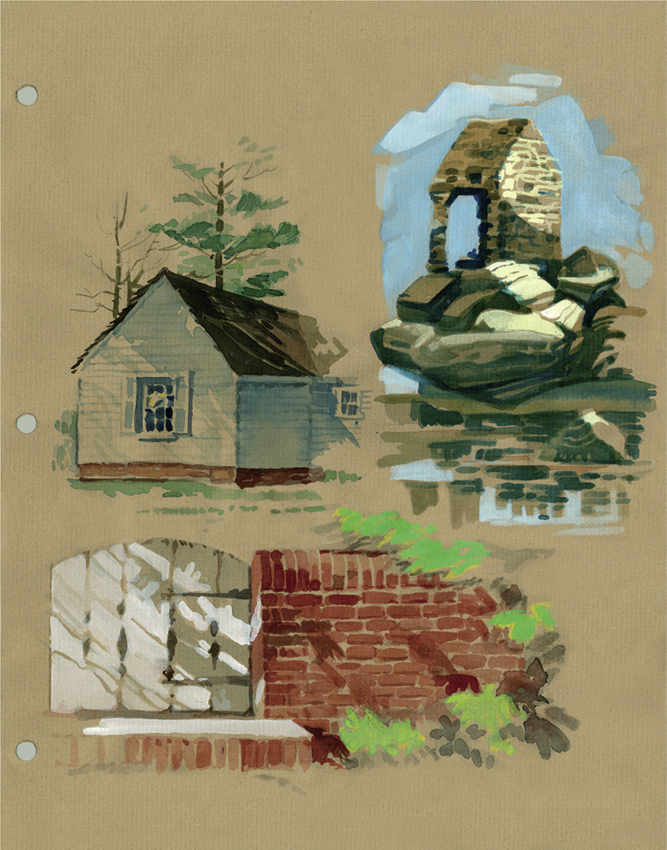
DESIGNS TRANSPOSED TO OTHER RENDERINGS
These sketches, based on the work of Gene Holton, explore the possibilities of translating pen-and-ink drawings into other techniques.
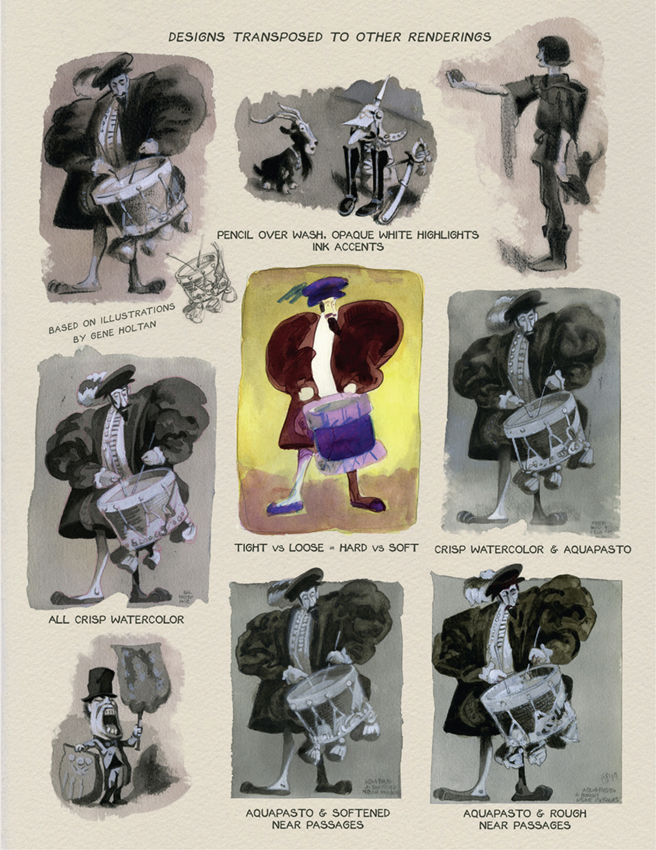
ADDITIONAL RENDERING STYLES INCLUDING GLAZING AND TONED PAPER
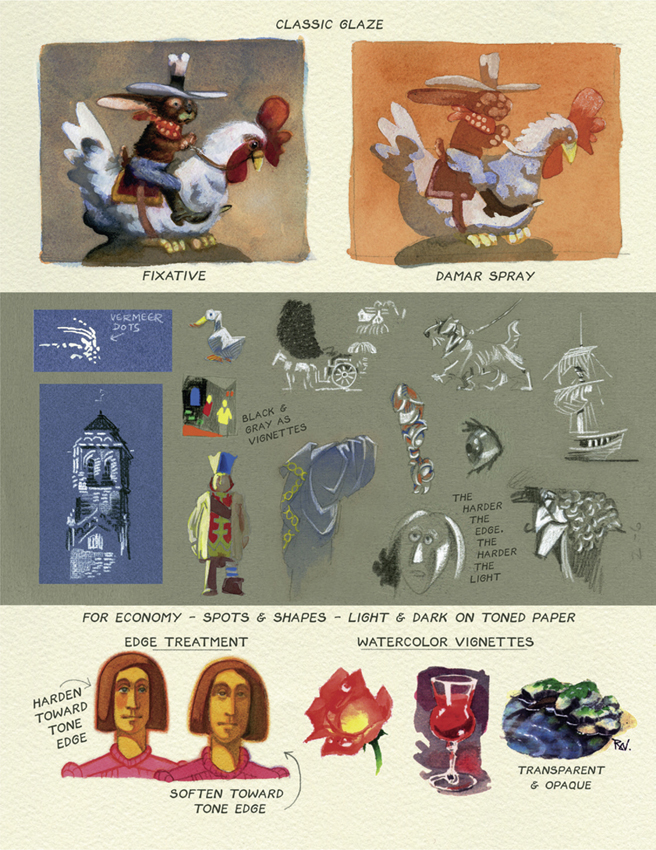
RENDERING DETAIL

RENDERING LIGHT AND SHADOW

ARTISTRY VERSUS ROUTINE CONVENTION
